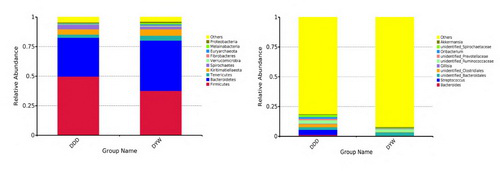The gut microbiota has a great effect on the health and nutrition of the host.Manipulation of the intestinal microbiota may improve animal health and growth performance. The objectives of our study were to characterize the faecal microbiota between wild and captive Tibetan wild asses and discuss the differences and their reasons.
Animal Evolutionary Adaptation and Conservation of Endangered Species Group used high‐throughput sequencing of the 16S rRNA V4‐V5 region, studied the gut microbiota composition and structure of Tibetan wild asses in winter, and analysed the differences between wild and captive groups. The results showed that the most common bacterial phylum in Tibetan wild ass faeces samples was Bacteroidetes, while the phylum Firmicutes was dominant in captive Tibetan wild ass faecal samples. The relative abundance of Firmicutes, Tenericutes and Spirochaetes were significantly higher (P < 0·01) than in the wild groups.
Captivity reduces intestinal microbial diversity, evenness and operational taxonomic unit number due to the consumption of industrial food, therefore, increasing the risk of disease prevalence and affecting the health of wildlife.
Our group studied the effect of the captive environment on intestinal micro‐organisms. This article provides a theoretical basis for the ex‐situ conservation of wild animals in the future.
“Comparison of the gut microbiota composition between the wild and captive Tibetan wild ass (Equus kiang)”was published in Applied microbiology. Gao hongmei, a doctoral candidate, was the first author, while zhang, a researcher, was the corresponding author.
The research was awarded the national key research and development plan (2017YFC0506405).Strategic leading science and technology project of Chinese Academy of Sciences (XDA2002030302); Qinghai provincial key r&d and transformation plan (2019-sf-150); Qinghai provincial key laboratory construction fund (2017-zj-y23) and other projects.The discipline group relies on the key laboratory of plateau adaptation and evolution of Chinese Academy of Sciences and qinghai key laboratory of animal ecological genomics.
Paper link :https://onlinelibrary.wiley.com/doi/10.1111/jam.14240

Histogram of relative abundance of intestinal flora at phylum level in wild and captive xizang wild donkey
